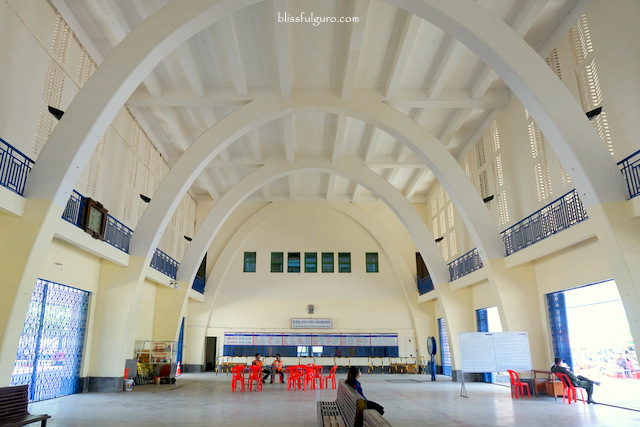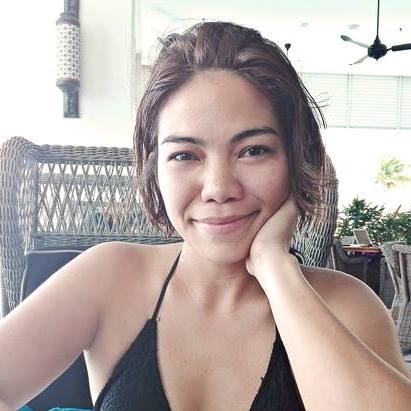If you'd ask me about my latest trip to Phom Penh, all I'd tell you is that prepare to get seared. Don't get me wrong, I live in the Philippines all my life but the midnoon April sun will pierce your skin like thousands of needles. The good thing though was that they have the best green mangoes and salt+chili dip in the world. The two have no connection at all, but these were the memories I have of Phnom Penh.
It was our second stop in Cambodia
during Same Same Summer Trip 2017, our annual two-month backpacking trip. Me
and my buddy just came from Siem Reap after our four-day stay and sought the
help of an online travel company, Angkor TravelPlus, to secure our ride to the
capital city via van (which they call express mini-bus). After rediscovering
Malaysia (we tagged along our respective moms and showed them around our
favorite cities in the country), we headed to Cambodia, Thailand and Vietnam
afterwards.
It was our first time in Phnom Penh, and as
usual, we had no concrete plans for our three-day stay. All we knew was that we
weren't gonna take a trip to the horrific genocide museum and killing fields; we try to avoid such depressing places. So we devised our own walking tour and
trusted our sore feet to lead the way (check
here for discounted tours, transportation and activities in Phnom Penh).
 |
| Early morning sun+heat. Checking out the stalls for the best green mangoes in the world. |
 |
| Traffic jam, Phnom Penh edition. |
 |
| Billabong Hotel and Hostel Phnom Penh |
The Central
Market is a landmark in itself . This huge market was built in 1937 in the
shape of a dome with four branched-out hallways. It is filled with numerous
shop stalls that sell almost everything. I found pleasure on checking some
cute trinkets, but ended up buying nothing (blame it on our super tight budget).
Shopaholics would definitely have a great time here.
 |
| The Central Market |
 |
| Royal Railway's Phnom Penh Station |
We had two roadside coffee stops before we
reached our next destination, the Wat Phnom. We paid US$1 each for the entrance
fee and explored one of the famous landmarks of Phnom Penh.
 |
| Wat Phnom |
 |
| Seeking refuge |
The heat was unbearable at that time, so we took our time having lunch. We then went out and followed
the river that led us to Sisowath Quay.
The three-kilometer-long boulevard is where the audience for the Water
Festival, especially boat races, is accommodated.
 |
| Sisowath Quay: Where the Mekong River meets Tonle Sap Lake |
There was a temple, Wat Ounalom, across it which seemed interesting. Not minding
a man who insisted that it was close at that time, we still went finding out on our own that it was indeed having a break from visitors. The man
suggested some place to visit instead which, I politely declined. Scammer alert!
 |
| Wat Ounalom |
The Royal Palace is a complex of buildings which
functions as the royal residence of the king of Cambodia. Built in
1860s, the complex houses the Silver Pagoda, Moonlight Pavilion, Khemarin
Palace, Throne Hall, and the Inner Court.
 |
| The Royal Palace |
Built in 1958, the Independence Monument was constructed in commemoration of
Cambodia’s independence from France in 1953. Located in a rotunda in between
Norodom Boulevard and Sihanouk Boulevard, the monument is in a form of a
lotus-shaped stupa. It is the center of activity during important national
celebrations.
 |
| Independence Monument |
I was already aching for a time-out from the punishing afternoon heat, covering most of our intended spots on foot. Finally, we took a tuk tuk to our hotel and my body effortlessly surrendered to the bed.
We had a good rest that afternoon, which we needed
so much as we had to meet up with a blogger friend which we met on a trip in
Indonesia last year. Kounila was born and bred in Phnom Penh and is a
successful blogger/entrepreneur in the city. A café near the Russian Market was
our rendezvous for that evening.
 |
| Russian Market at night |
 |
| Food trippin' with Phnom Penh's top blogger/entrepreneur, Kounila of wheninphnompen.com. |
 |
| You should try Bok Beer whilst in Phnom Penh. Only at TINI Cafe+Bar |















Bok Beer for the win!
ReplyDeleteBok Berr ftw! :)
Delete